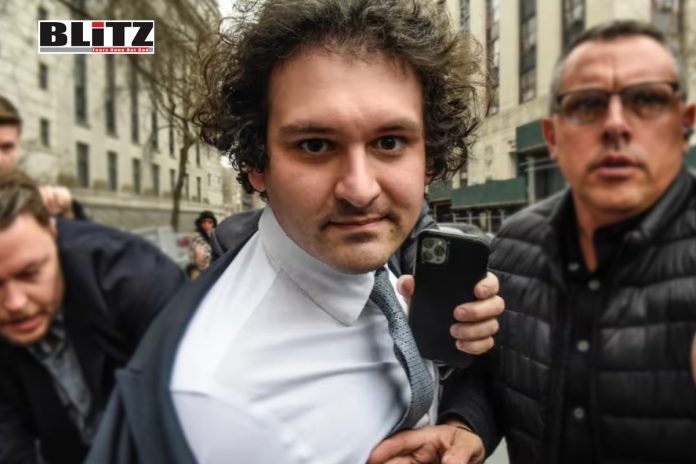In the chronicle of financial history, the tale of Sam Bankman-Fried will likely be remembered as a cautionary saga of ambition, excess, and ultimate downfall. Once hailed as a wunderkind of the digital currency world, Bankman-Fried now faces the prospect of spending the majority of his adult life behind bars for perpetrating a colossal fraud. However, his story is not just one of personal moral failing but also a reflection of the societal dynamics that enabled his ascent and subsequent downfall.
As Bankman-Fried prepares to face a Manhattan judge, the stark reality of his situation becomes evident: a man barely into his 30s, once hailed as the world’s youngest billionaire, now stares down the barrel of a lengthy prison sentence. The magnitude of his crimes, involving the misappropriation of billions of dollars of his customers’ savings for personal indulgence, is staggering. Yet, as we examine the broader context of his rise to prominence, it becomes clear that Bankman-Fried’s downfall was not merely a result of his individual actions but also symptomatic of larger systemic issues.
Bankman-Fried’s swift ascent to riches and power was met with a symphony of accolades from politicians, celebrities, and financiers. Politicians spanning the political spectrum eagerly welcomed his substantial campaign contributions, overlooking the origins of his wealth. Meanwhile, celebrities and sports icons eagerly aligned themselves with his trading platform, FTX, in exchange for substantial financial compensation, seemingly unconcerned with the moral quandaries posed by their partnerships. This convergence of interests, driven by financial gain, epitomized a culture where ethical considerations were often eclipsed by the allure of wealth and influence.
Even esteemed statesmen such as Tony Blair and Bill Clinton were drawn into Bankman-Fried’s sphere, attending conferences held in exotic locales and generously sponsored by the young entrepreneur. The magnetic pull of his wealth and influence was so potent that even individuals of considerable stature were willing to turn a blind eye to his questionable ethics and conduct.
Simultaneously, the media played a pivotal role in perpetuating the myth of Bankman-Fried as a visionary disruptor. Rather than scrutinizing the origins of his wealth or the integrity of his business dealings, profiles often fixated on his eccentricities and quirks. Depicted as a tireless genius toiling away in a cluttered office, the narrative conveniently omitted the opulence of his lifestyle and the privilege of his upbringing. This selective portrayal served to further embellish his image as an enigmatic figure reshaping the landscape of finance, while obscuring the more unsavory aspects of his character and conduct.
However, as the adulation waned and scrutiny intensified, cracks began to appear in Bankman-Fried’s facade. His arrest and subsequent bail hearing, where an astronomical sum was required for his release, exposed the true extent of his hubris and deceit. The narrative of philanthropy and effective altruism that he sought to cultivate was revealed as a thinly veiled attempt to burnish his tarnished image.
Yet, while Bankman-Fried’s transgressions are his own to bear, they also serve as a sobering indictment of the broader culture of greed and excess that pervades our society. The era of cheap money and unfettered optimism that characterized the past decade provided fertile ground for individuals like him to thrive. In an environment where wealth and success are worshiped above all else, ethical considerations often take a back seat to personal gain.
The parallels between Bankman-Fried’s rise and fall and the events leading up to the Great Crash of 1929 are starkly evident. Much like the Roaring Twenties, a period characterized by rampant speculation and exuberance, the digital currency boom of recent years obscured the underlying vulnerabilities in the financial system. Society, intoxicated by the allure of unprecedented wealth and innovation, failed to heed the warning signs of excessive risk-taking and unchecked ambition inherent in Bankman-Fried’s enterprise.
Echoing the sentiments of economist John Kenneth Galbraith, it becomes apparent that financial crimes flourish amidst periods of abundance and complacency, where trust abounds, and oversight is lax. However, as history has repeatedly demonstrated, such periods of euphoria are inevitably followed by a sobering reckoning. When the inevitable crash arrives, the illusion of prosperity is shattered, laying bare the deceit and malfeasance that underpin it. In these moments of crisis, the true nature of the perpetrators is exposed, their fraudulent schemes unraveling in the harsh light of reality.
In the aftermath of Bankman-Fried’s downfall, it becomes imperative for us to engage in introspection and extract the valuable lessons from this saga. We are compelled to scrutinize the warning signs that preceded such catastrophic events and take proactive measures to prevent their recurrence. Holding accountable not only those directly responsible for financial crimes but also those who enabled and turned a blind eye to their actions is crucial in fostering a culture of accountability and integrity.
Above all, the narrative of Sam Bankman-Fried serves as a poignant reminder of the perils associated with unchecked ambition and the dire consequences of prioritizing profit over ethical principles. It underscores the urgent need to address the systemic issues that breed financial malfeasance and to instill a culture of transparency and responsibility within our institutions. Only by addressing the root causes of such misconduct and restoring faith in our financial systems can we hope to avert similar tragedies in the future and safeguard the well-being of society as a whole.




